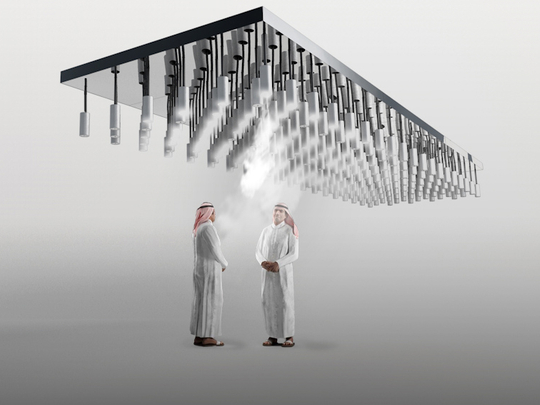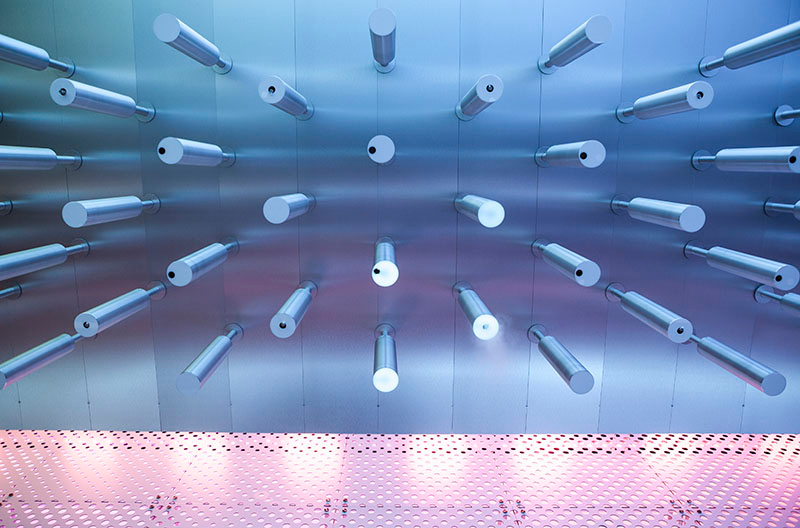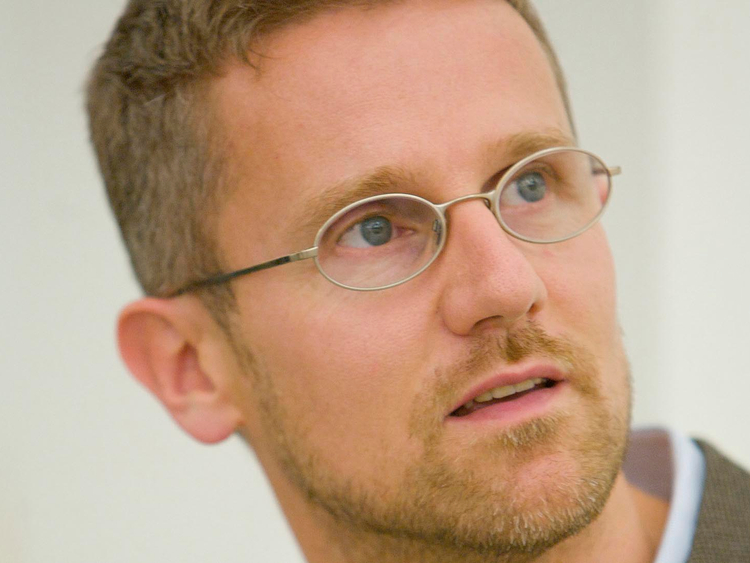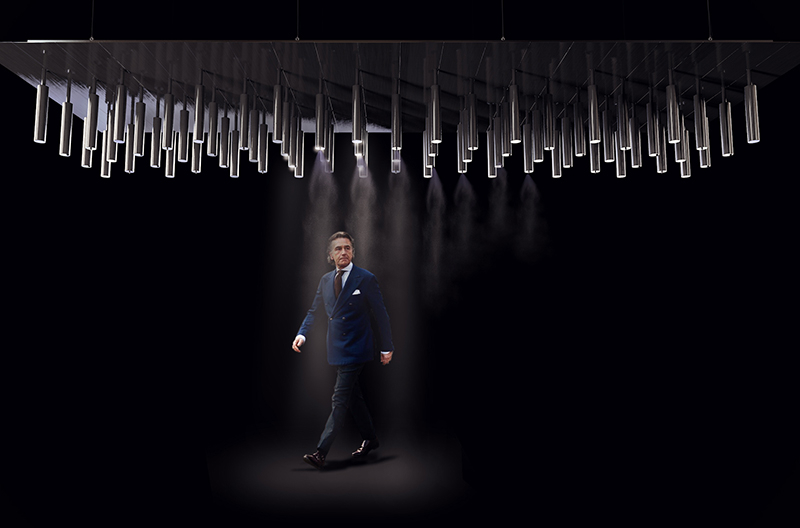
Carlo Ratti has seen the future and it is cool. Cool, personal and designed for Dubai. Wishful residents often say the emirate will be the world’s first air-conditioned city, and the Italian architect’s new Cloud Cast project is a fresh stab at making that dream a reality.
Better yet, it uses the principles of a system that has been embraced by the region’s earliest inhabitants. Only, instead of a giant dome that stretches from Ghusais to Ghantoot, people will be cooled by motion-activated clouds of water vapour. Simply stepping into a public space will prompt a sensor to trigger a spray of mist that evaporates as it cools.
“I think that we could see the first applications at Dubai Expo 2020,” Ratti tells GN Focus by email. As Director of the Massachusetts’ Institute of Technology’s Senseable City Lab, he has been tasked with investigating how digital technologies are changing the way we live and work.
Cloud Cast was first exhibited at the Museum of Future Government Services during the UAE Government Summit in Dubai this February. “Cooling through evaporation has been used for centuries in the Arabian peninsula and is still more energy efficient than, say, air conditioning,” says Ratti. “Cloud Cast is just an improved 2.0 version of this kind of system.”
Regional roots
Arabs once tacked damp grass or cloth on to their windows so the wind would be cooled as it entered the home. A similar principle was employed by ancient architects across South and West Asia, who used large water tanks in the basement to lower a building’s temperature. And also in Arabia, underground water canals, called qanats, distributed cool air over several wind towers.
Many of these hot ideas are inspiring modern architects and designers. Alongside other technologies, evaporative cooling is now widely used in the UAE, both for portable coolers such as those used at events, and to air-condition factories and offices. It has been found to be up to 30 per cent more efficient than other types of air conditioning.
Cloud Cast is part of a range of studies on location-based temperature control infrastructure that explores how synchronising human presence with climate control can make public spaces in cities such as Dubai more liveable and sustainable.
Dubai dream
“We developed the first Cloud Cast prototype thinking about Dubai,” Ratti says. “Especially in urban environments, throughout most of the year, the climate discourages people from living and walking outside air-conditioned buildings.”
The emirate’s tropical desert climate means summers are hot and humid, with average highs of 40 degrees Celsius and overnight lows of 30. “Cloud Cast could strengthen pedestrian traffic, but most importantly strengthen city life and contribute to a more diverse and attractive urban environment.”
Ratti expects the system to translate well to other areas with similar hot arid and semi-arid climates, such as other countries in the Arabian peninsula, Australia, North Africa, southwest Africa and large swathes of the US, such as Nevada. “The system would work less well in hot humid climates — think for instance of tropical locations — as the higher humidity in the air makes evaporative cooling less efficient,” Ratti says.
Energy efficient
The idea of a system for personal climate control grew out of an attempt to monitor the energy-occupancy mismatch in commercial buildings.
With staggering amounts of energy being wasted on cooling or heating empty offices, homes and partially occupied buildings, Ratti and his team began to think about synchronising human presence with climate control. An earlier system they developed, called Local Warming, has individual heated clouds follow people around, reducing consumption and improving efficiency.
Both systems are based on human occupancy sensing and save energy and water by only targeting people they detect — rather than change the temperature of an entire space. “Efficiency depends on the number of people you have in a given space. If a space is very crowded, the efficiency remains similar to that of a traditional system.
But in unevenly occupied spaces — think about a large office building lobby, or a bar’s outdoor sitting area — efficiency increases dramatically,” says Ratti. “In some cases, our calculations show you could reduce energy consumption by 90 per cent.
“If you have a very crowded area you will need to cool many people, developing a very complex system. In the worst case, you will end up cooling the whole environment, as it happens with traditional systems.”
The prohibitive financial and resource cost of such an undertaking means a citywide air-conditioned dome is still in the realm of science fiction, even in Dubai, but Cloud Cast could easily be applied to confined outdoor areas, such as a boulevard or shopping precinct. Since the system can be suspended at different heights, it is fairly versatile.
Ratti’s team has been in discussions with UAE developer maar Properties for several “climate remediation” concepts, he says. GN Focus was unable to reach Emaar by press deadline.
Cloud Cast: How does it work?
Cloud Cast is a personalised, individual cooling system developed by Carlo Ratti, Director of the MIT’s Senseable City Lab.
Ultrasonic sensors embedded in a suspended canopy detect passers-by by interpreting echoes from high-frequency sound waves. It measures the interval between sending the signal and receiving the echo to determine the distance from the floor. Visitors passing between sensor and the floor will produce an increase or decrease in this time interval, having either absorbed or reflected the sound waves.
Sensor data is fed to a central control system used to trigger hydro-valves near those people and a responsive cloud of mist is activated by each passer-by. The mist is so fine that it does not wet people beneath it.














